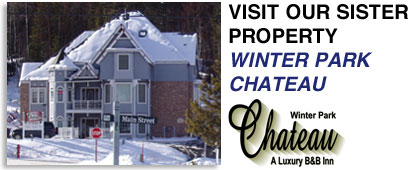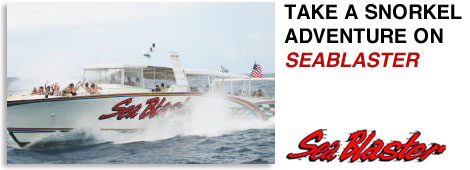Sea Chateau offers the ideal setup for diving.
The huge stern platform is the perfect place for divers to suit up and enter the water. The "sugar scoops" offer extremely easy access to re-board the boat after a fulfilling and invigorating dive.
Although the water temperature averages 83 degrees year round, Dive skins offer added protection against the coral.
A good mask fit makes for a happy diver.
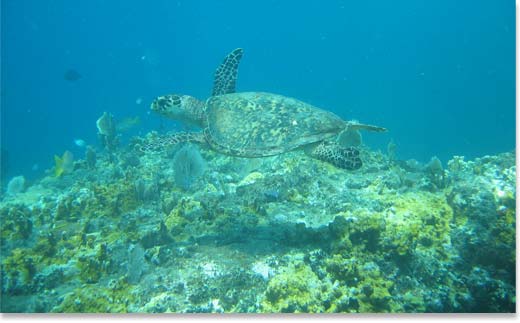
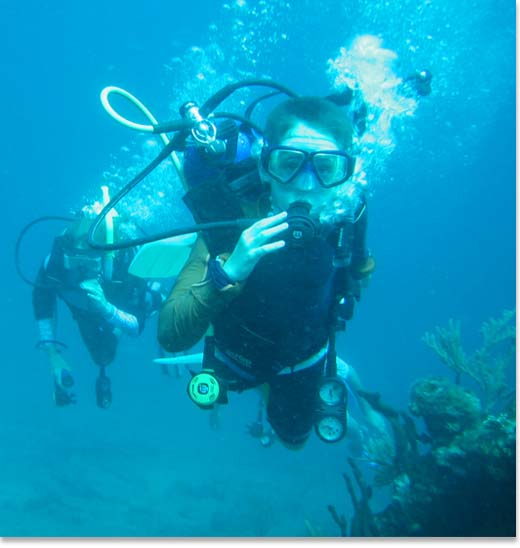
BREWERS BAY PINNACLES
DEPTH: 25-1 10 FEET (8-33 M)
LEVEL: ADVANCED
An enjoyable summer dive when there's no north swell, Brewers Bay Pinnacles is located just
off the western tip of the bay. It's too far from the beach to be dived as a shore dive. The massive
pinnacles are of varying height and bulk. They rise steeply from the ocean floor, some of them
come within 30 feet of the surface. The gaps between the sheer granite structures comprise a
confusing maze of alleyways, dead ends and narrow passages. The rocks are covered with
deep-water gorgonians, sea fans and fire coral. Large jacks, eagle rays and turtles are often
spotted by the observant diver. Amid the rocks and reef look for lobsters, skittish queen angelfish
and whitespotted filefish.
BRONCHO BILLY'S
DEPTH: 15-50 FEET (5-15 M)
LEVEL: NOVICE TO ADVANCED
Situated at the northwestern tip of George Dog, Bronco Billy offers a meandering course of coral
ridges and corresponding canyons. Two coral archways lead into the canyons. Follow the canyons
and the bottom topography around the tip of George Dog into a large steep-walled box canyon
and boulder field. Swing a little wider around the tip of the island on your return trip, and you
should find the other coral canyon that will lead you back to the second archway. Large pillar
coral formations grace the site, but the highlight is the arches. When lit with a diver's flashlight
or a photographer's strobe the colors just explode. The brilliant reds of the encrusting sponges
and the oranges of the cup corals, combining with the lavender of other sponges and the lacy
frill of hydroids, makes for a Technicolor extravaganza. However, without a light or strobe there
is nothing there but shadow and muted colors.
BROWN PANTS
DEPTH: 10-40 FEET (3-12 M)
LEVEL: ADVANCED
The south shore of Norman
Island is compelling in its primitive beauty: rugged cliffs descend into the breaking surf, long
tortured fingers of rock reach out just beneath the surface of the sea, and nowhere can the hand
of man been seen. It's a world away from the yachting lifestyle found on the other side of the island.
Many years ago, when Annie and Duncan Muirhead were running Misty Law, the first live-aboard
in the BVI, they were exploring this point as a possible dive site. Several large bull sharks rounded
a corner and chased them back to their boat, and the site was named.
The point rises abruptly from the flat, almost barren sea floor. The water is usually clear here.
When you first descend, look out into the blue for turtles and eagle rays. Then move up shallower,
toward the underwater cliffs. Small gangs of curious barracuda loiter outside the rocks. The dive
consists of exploring the numerous canyons and grottos that are defined by the network of ridges
extending from shore. There is a large open cave in one of the canyons. A dive light will reveal
all the glorious brilliant colors of the encrusting sponges that grow in the shadows.
Seen here:
large whitespotted filefish, Black durgon, schools of palmetto, queen angelfish, turtles, eagle
rays, barracuda
CARROT SHOAL
DEPTH: 15-60 FEET (5-21
M)
LEVEL: INTERMEDIATE
Carrot Shoal, off the southwest tip of Peter Island, is another open water site with all the
adventure, superior visibility and big fish encounters this promises. Carrot Shoal is shaped like
a railroad train parked on an underwater platform. The platform rises abruptly from a 60 to 70-foot
bottom and levels off at 40 feet; then the shoal itself rises straight up to scratch at the surface.
It's quite narrow and extends for several hundred feet. It is cut through in several places, which
gives it the appearance of separate railway cars. Spend the time to fully investigate the abundance
of creatures living under the ledge on the edge of the platform: large green moray eels, tiny fairy
basslets and reclusive lobsters. Toward the far end of the formation a large overhang rears up.
Beneath it look for the uncommon longsnout butterflyfish, as well as colorful Spanish and spotted
lobsters. Past the end of the "train" there is a lovely low archway worthy of the side trip.

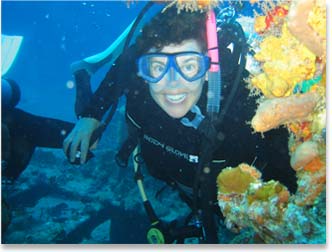
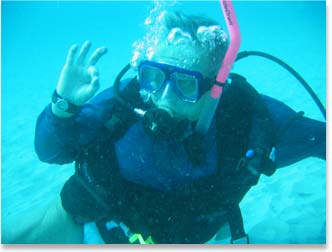 SCUBA DIVING INCLUDED
SCUBA DIVING INCLUDED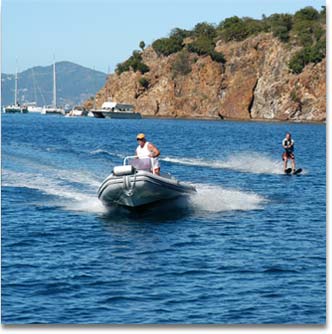 OTHER WATER TOYS
OTHER WATER TOYS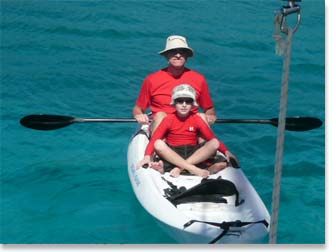
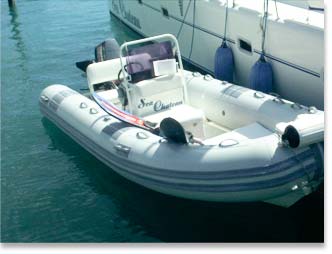 EASY RECREATION
EASY RECREATION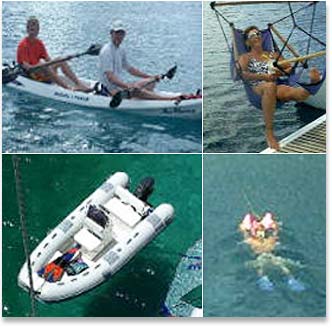 INDOOR TOYS & RECREATION
INDOOR TOYS & RECREATION